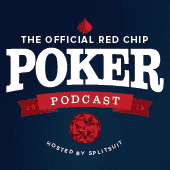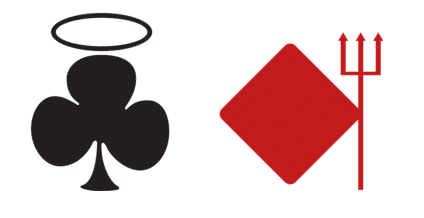There are a lot of rules in poker. The nuances may change from card room to card room, but a set of universal rules governs the game and there are some very specific reasons for it. In this week’s podcast, coach Doug Hull will delve into those reasons, and deepen your awareness and understanding of poker’s most important rules to make you a better player.

The Live Poker Rulebook
Home games are casual affairs. Online poker’s rules are automatically enforced by its software. Live poker, on the other hand, is a game with many, many rules.
In Hull’s voluminous poker experience, many players (and even some floor staff) fail to grasp the reasons behind the rules, and that failure to understand why the rules exist can contribute to mistakes, embarrassment, delays… nothing good can come of a failure to grasp the reasons behind the rules.
Hull outlines three driving factors for many of poker’s enforced processes and guidlelines:
• Game Protection
• Anti-Collusion/Anti-Angling Rules
• Poker Ecosystem Rules
Game Protection Rules
The idea behind game protection stretches back to the lawless days of Texas poker, where cheating was rampant and you’d be liable to get shot winning the wrong pot from the wrong highwayman. Over many decades, a system of safeguards have been put in place to ensure the game plays fair and square.
So when the dealer spreads their deck of cards across the table, it’s not just for flair. This is to show that all the cards are there, and the deck conforms to expected 52-card standards.
The dealer will also flip the cards over face-down to fan out the backs. Marked cards by themselves are difficult to identify with the naked eye, but human brains are great at noticing breaks in patterns, so a face-down fan is meant to demonstrate and ensure no cards are marked.
The small plastic card the dealer cuts onto (the “cut card”) is there to prevent the bottom card from being flashed to players, revealing information that could be used to an advantage.
The burn card is another rule related to marked decks. Even if a deck were marked, players would only be able to see this burn card pre-flop, so the con artist would be denied knowing what one of the cards to come is.
One other move you’ll notice, particularly when a player is tanking on the river, is the dealer counting down the stub (the remaining deck of cards) to make sure they started the hand with a deck of 52. Why do they do this? It’s because of a cheating move done by a “holdout artist”, or someone who uses sleight of hand to swap cards in and out of play as it suits them.
If you have any reason to be suspicious of the physical setup of the decks you’re playing — for example, if you believe them to be marked — you can request a setup change, and floor staff will change the deck.
If you’re reading this, hopefully you know not to lift your cards physically off the table. Besides the obvious reasons why this is a bad move, it gives information only to those players who can see the cards, so it’s patently unfair to those who don’t, and no one should be able to see your cards in the first place!
You’ll notice the dealer never releases the deck from the start to the finish of the hand. This helps to guarantee the hand cannot be fouled by some tampering with the cards, accidentally or purposefully.
You also can’t just hand the dealer money. The “eye in the sky” security camera in the ceiling actually scans the table for cash and chips, so your $100 bills have to be put on the table and then picked up by the dealer after being given a moment to register on camera. This is why you’ll see dealers spread cash and chips on the table as well.
Anti-Collusion/Anti-Angling Rules
Angling or angle-shooting is the act of bending the rules to get an advantage, and exploiting gray areas to take advantage of other players. It is generally very against the spirit and etiquette of the game, and yet it’s something every player deals with from time to time. A clear knowledge of the rules against angle-shooting is the best protection.
The “string bet” is the most classic, typical angle. It’s also something that a great deal of inexperienced players will do before being reprimanded by the dealer. A string bet is when you make a bet using more than one motion — most commonly, when you place chips in the pot for a raise, and then you immediately add more chips to that raise. When done innocently, you’ll be scolded and allowed to raise only the amount put in the pot with your first motion. When done as an angle, it allows someone to gauge the reactions of their opponents before finalizing their bet, and it also allows someone the shady opportunity of quickly pulling back the extra chips should they get snap-called. Push out your bet in one solid motion, and always be on the lookout for string bet angle shooters.

The “I want to see that hand rule” is little-known among live poker beginners, but can be a good antidote in case you encounter a possible case of collusion. Essentially, you are entitled to ask the floor over to see the hole cards of players who are exhibiting signs of collusion. Hull tells a story of one such occasion when he caught a pair of players executing what looked like a clear case of coordinated cheating behavior. As rare as collusion may be in the poker world, it does exist, and the “I want to see that hand rule” exists for this reason.
Another important rule to consider: Action out of turn is binding. Hull wonders how poker would be if action out of turn wasn’t binding to clearly illustrate why we need this rule.
“English only at the table” is a rule in most American casinos. Be wary of places like Montreal where more than one language is spoken — the distinct feeling that you’re being colluded against is more paranoia than reality, but it will certainly be a good idea to be on your toes.
If there’s ever an exposed card, it’s going to be shuffled back into the deck. All sorts of bad situations arise when a mistake is allowed to be played. For angle-shooting purposes, but also for game-flow purposes, any mistakenly exposed card is announced to the whole table and quickly removed from play.
It may seem counterintuitive that a mistakenly exposed card pre-flop would become the burn card. After all, it removes protection against the top card of the deck being marked. The idea behind this provision is to keep the flop cards as they would have been if no card was exposed, and disallow the dealer from angling the cards to come. The exposed card is used as the burn, and the deck remains configured as it would be if no mistake was made.
Dealers rotating gives the ultimate protection against dealer-player collusion. Even if there is collusion, it can’t last very long.
Most of these rules are designed to remove ambiguity. The one chip rule is designed in support of this concept. If you only throw in a single chip, that is going to be a call. A verbal declaration of raising must be made or the dealer will process your chip as a call. Similar to the string betting rule, the one chip rule prevents players from being able to unfairly exploit information from their opponent’s reactions to their actions.
Poker Ecosystem Rules
“Going south” is not allowed at the table simply to keep the game alive. If you’re sitting on a stack of $300 and quietly slip a $100 chip into your pocket, that’s “going south”. If everyone did this, the money on the table would always be shrinking, and the game would lose its juice and break.
The maximum buyin ensures that players don’t get psychologically intimidated by other players who can bring enormous stacks of cash to the table. It keeps the playing field level and doesn’t prevent anyone from accumulating huge stacks and earning the right to apply that psychological pressure.
The min buy is there to prevent players from being alienated by some random obnoxious player constantly buying in for tiny amounts.
The “show one show all” rule gives you the right to demand to see a hand being shown to another player. It’s a common sight to see a player flash their cards to another reg sitting next to them before mucking them. Technically, you are entitled to see those cards. Often you’ll see players letting this kind of behavior slide, but if you feel like it’s putting you at a disadvantage, chime up.
In home games, you’ll see “rabbit hunting” all the time, but it’s not allowed in poker rooms. A player will muck at showdown but ask the dealer to put out the turn and river to see if they would have caught their drawing hand. Rabbit hunting is not allowed for game flow reasons, but also for information reasons. If you were repping a nut flush, and the turn or river contains that suited ace, your cover just got blown.
If there is one game that is better than the other, players are going to gravitate to the juicier game. This creates a shorthanded game that is sloughing off players to the good game. This is a big reason you are made to wait for a table change.
You’re not allowed to play out of a rack on the table. Besides slowing down the game by requiring the player to often pluck chips out awkwardly, it also gives the player an opportunity to tilt and bounce immediately. Not allowing out-of-rack play keeps players anchored to the felt.
If you miss a blind, you’ll get a blind button to make sure you don’t skip out on your blinds every orbit. Otherwise, players would be walking away from the table every time the blinds came up and there would be no dead money to keep the game going.

“Going south” is not allowed at the table simply to keep the game alive. If you’re sitting on a stack of $300 and quietly slip a $100 chip into your pocket, that’s “going south”. If everyone did this, the money on the table would always be shrinking, and the game would lose its juice and break.
which is what the house does with the rake, only more slowly. 😉
I occasionally see the “I want to see the hand” rule abused, particularly by a player who has folded his hand, but wants to see my cards for “information”. I feel that anyone invoking this rule at me is accusing (or at least implying) that I am cheating, and I tend to take offense. This happened most recently to me in a charity tournament (non-Casino) by a player who is known to angle-shoot. We are both well known in this room, and I have a reputation of being a very honest player. However, most players in this room don’t really understand this rule, or that it implies suspicions of cheating.
I’m wondering what is the best way to respond in a situation like this?
stand up. calmly look directly at the other player. like you’re going to show him your cards. Then reach out and bury them deep in the muck
nice article. lots of info. thanks.